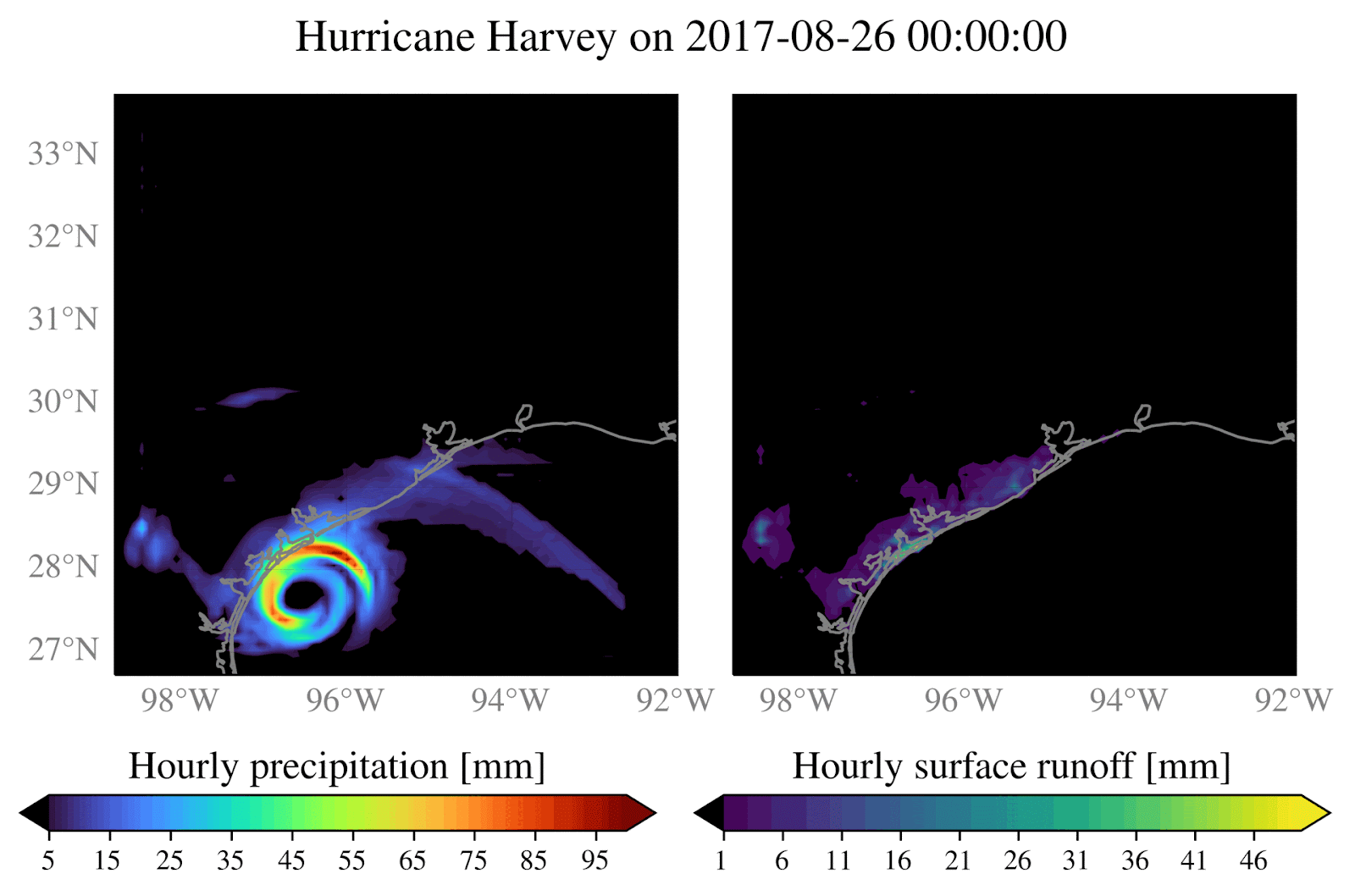By Kimberly Mann Bruch, San Diego Supercomputer Center, and Ken Chiacchia, PSC

The wind blows as Hurricane Delta tears up the coastline of Grand Cayman, Adobe Stock #383372713
Simulations on Bridges-2 Reveal that Reducing Estimates of Atmospheric Friction Improves Storm Predictions
Hurricanes have an outsized impact on human safety and economic prosperity. A team from the University of Houston found that, when they reduced estimates of atmospheric friction of storms, their predictions on PSC’s Bridges-2 improved markedly over standard storm predictions. This advancement can promise better planning to lessen the effects of storms on people and possibly aid emergency responses to storm landfalls.
WHY IT’S IMPORTANT
Hurricanes and other extreme weather events are expensive in lives and money. From 1980 to 2023, weather and climate disasters caused about $2.6 trillion in damages in the U.S., according to NOAA estimates. In 2022 alone, the U.S. experienced 18 disasters individually costing $1 billion or more. Worse, U.S. hurricanes from 2000 to 2021 took almost 2,000 lives. As climate change continues to intensify these storms, accurate forecasting becomes ever more crucial.
“Enhanced hurricane predictions can potentially save millions of dollars and many lives by providing more precise forecasts of hurricane winds and floods. [A better understanding of these storms] holds promise for better evacuation planning but also has the potential to inform emergency services with the forecasts needed to respond more effectively.”
— Mostafa Momen, University of Houston
University of Houston graduate student Md Murad Hossain Khondaker, working with his advisor Assistant Professor of Civil and Environmental Engineering Mostafa Momen, wanted to understand better how atmospheric friction affects storm strength and numerical predictions. To study this problem, the team got access to PSC’s NSF-funded flagship supercomputer, Bridges-2. They got time on the system through an allocation from ACCESS, the NSF’s network of supercomputing resources, in which PSC is a leading member.
HOW PSC HELPED
At the core of the team’s research is a novel approach to understanding how hurricanes function. While the power of the sun in low latitudes can pump energy into storms, making them more intense, the atmosphere itself resists through friction. But the extent of this friction, and its effect on storm power, is poorly understood. Khondaker wondered what changing the assumed friction, or diffusion, would do to the predictions.
The scale and complexity of this research required significant computational resources to process the vast datasets involved. Bridges-2 was instrumental, providing more than 300,000 CPU-core hours as well as the performance of its 16 higher-RAM “regular memory” nodes. With 512 gigabytes of RAM apiece, each of these nodes has eight times as much memory as a high-end laptop.
“Simulating 17 days of Hurricane Irma with eight-kilometer horizontal resolution took about 22 hours using 128 processors. By conducting hydrological simulations, we showed that this new adjustment also improves flood forecasts in hurricane-prone regions. The implications of these findings are far-reaching, as recent hurricanes like Katrina, Harvey, and Maria caused over $400 billion in total adjusted costs, according to the NOAA estimates.”
— Mostafa Momen, University of Houston

Reducing the diffusion in their Bridges-2 simulations, the researchers made a startling discovery. The adjusted computer models significantly improved the accuracy of hurricane intensity forecasts. This improvement also extended to predicting hurricane-induced rainfall, a critical factor in anticipating flood risks in vulnerable areas.
The adjusted model was able to make hurricane intensity forecasts more accurate by up to 40 percent compared with the default weather models. Another surprising finding was that more intense hurricanes do not necessarily lead to more total rainfall but rather more localized and severe precipitation. This insight is particularly relevant for urban areas, where concentrated rainfall can lead to catastrophic flooding, as seen during Hurricane Harvey in Houston.
Looking ahead, the research team plans to expand their focus to potentially include storm surge predictions at coastal locations and further refine their models by incorporating more sophisticated physics-based modifications. These efforts aim to enhance our ability to predict and prepare for hurricanes, ultimately reducing the risks for coastal communities.
